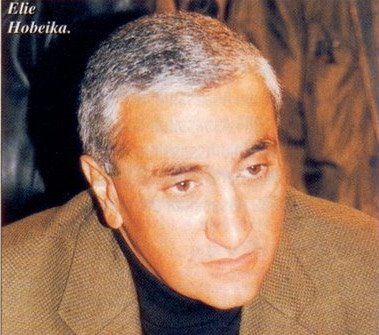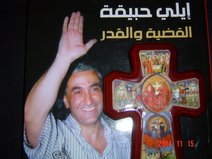
By Kaveh L Afrasiabi
Over the weekend, Iran hosted the presidents of Iraq, Afghanistan, Tajikistan and Turkmenistan to celebrate Nowruz, the ancient Persian new year marking the first day of spring that is celebrated by some 300 million people around the world who together form an important cultural bloc.
Both Supreme Leader Ayatollah Ali Khamenei and President Mahmud Ahmadinejad used the occasion to emphasize the importance of Nowruz in fostering a global climate of peace and cooperation. In light of a recent United Nations General Assembly resolution marking March 21 as International Nowruz Day, Iran has now set its eyes on spreading the cause of celebrating Nowruz on an expansive basis.
"It is a cause of joy that through collective cooperation Nowruz became global," Ahmadinejad stated, adding that "observing Nowruz will not only promote cultural values, but it will also help nations establish relations based on friendship, peace, justice and respect." Iran has issued a new postage stamp to commemorate the UN's Nowruz Day, this as part of a concerted effort to maximize the benefits garnered by Iran's pre-Islamic heritage.
By all indications, this represents a cultural evolution in contemporary post-revolutionary Iran dominated by the Islamist discourse. Over the past 31 years, in the complex interplay of Iran's dualistic, part Islamic, part pre-Islamic culture, the government has prioritized the Islamic and, yet, increasingly has discovered the trans-Iran potential of the pre-Islamic, particularly since the collapse of the Soviet Union and the rediscovery of cultural roots connected to Persian culture and language in certain parts of Central Asia and the Caucasus, above all Tajikstan.
To some extent, the origin of this new "cultural offensive" by Iran should be traced to a former president, Mohammad Khatami, and his promotion of a "dialogue among civilizations", which inevitably implicated the Islamist political system in a discrete re-embrace of pre-Islamic civilization, although without ever losing the priority given to Islam.
In contrast, although Ahmadinejad, Khatami's successor, has not continued his civilizational discourse, signs are emerging that as a result of both the national unifying cause as well as external dividends, Iran is devoting greater energy to "Persianist" cultural values, including by promoting tourism of numerous ancient sites, holding international conferences and seminars to celebrate the poet Hakim Abu'l-Qasim Ferdowsi (935-1020) and promoting the Farsi language.
Given the foreign priority of maximizing the sources of pro-Iran solidarity through whatever venues available at a critical time when Western pressure on Iran over the nuclear crisis is intensifying, Tehran's decision to tap into cultural values makes sense - and is bound to add to its domestic popularity as well. The trick is to make sure the unwanted (restorationist) consequences of glorifying the past monarchical systems are avoided. Such side-effects seem less important today than the tangible benefits of promoting "cultural blocs" among nations on the basis of language and culture.
On a broader level, the growing importance attached to Nowruz by Tehran is in synergy with the globalist self-promotion of the Islamic Republic that, in the words of Ahmadinejad, has a stake in "global management". This is tantamount to opening a new front in the conscious pursuit of an alternative global cultural and political "public sphere" that would not be either Western-centric or based on Western political hegemony. Nowruz provides Iran with an important cultural tool to refine and upgrade a cultural toolkit that for the most part has had a rather one-dimensional focus on the global politics of Islam. Does this mean that a restructuring of the regime's cosmopolitan identity is underway?
According to a Tehran University political scientist, the regime's identity is "in a state of flux" and a "hybrid" that due to the recent, more energetic embrace and application of the purely Persianist cultural values ("within set limits of course") has become more dynamic. A more organic self-connectedness to pre-Islamic values on the part of the Islamic Republic may be forthcoming, depending on "several factors, one being Iran-Arab relations" that are today marked by some tensions, above all between Iran and Saudi Arabia, says the Tehran professor.
As a result, instead of the Organization of Islamic Conference, which is dominated by Saudi Arabia, Iran may find that other transnational organizations and movements, such as the Non-Aligned Movement, which is slated to be led by Iran two years from now, may be more receptive to its globalist cultural intentions.
An important vehicle for Iran's global promotion is the English-language PressTV, the CNN-like news network launched by Tehran, which provides in-depth coverage of international issues, particularly pertaining to the Occupied Territories and the Middle East. The newly-launched network is in many ways a work in progress that could serve the need of developing nations for non-Western sources of news and commentaries.
Equally important for its future is to avoid the impression of being a tool of government propaganda. This is a tall order, and PressTV has still to pass the litmus test of a true "international network".
Together, Tehran's more spirited promotion of its basket of dual cultural values and the network are elements of novelty in the evolutionary process of post-revolutionary Iran.
Kaveh L Afrasiabi, PhD, is the author of After Khomeini: New Directions in Iran's Foreign Policy (Westview Press) . For his Wikipedia entry, click here. His latest book, Reading In Iran Foreign Policy After September 11 (BookSurge Publishing , October 23, 2008) is now available.



